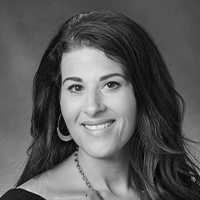Question
What considerations should be taken before proceeding with fitting young children with SSD?
Answer
We do start with having a conversation with the family about what we know. So we know that to date, there really are no evidence or outcomes on bone conduction hearing devices (BCHD) use for infants and young children with SSD. Choosing to fit a device should be a collaborative decision between audiology, the ENT, and the family. It is imperative that families understand that the BCHD will not provide binaural hearing. The main goal is to lift that head shadow effect by sending the signal via bone conduction from that impaired side and routing to that normal-hearing ear. We can suspect that results can be expected to be similar to that of a CROS system, where many studies have shown that it may be beneficial in quiet, but could be detrimental in noise, particularly when noise originates on that impaired side.
Many clinicians only recommended BCHDs for older children. However, we realized that BCHD technology continues to improve, and there have been significant advances in signal processing, adaptive directional microphones, and noise reduction, which can all be verified objectively using the Verifit Skull Simulator. If a parent chooses to have their baby or young child with SSD fit with a non-surgical device, it's really imperative that they be counseled on appropriate expectations and device usage. Specifically, the BCHD should be worn when the child's really being supervised and when there's not a significant amount of background noise. Examples include playtime with a parent or reading time or watching a show, playing a game on a tablet, eating meals at home, and one-on-one therapy services. Examples of situations where the device should not be used include noisy restaurants, crowded malls, sometimes a daycare, or during free-time at preschool.
The evidence continues to emerge in this area as there is limited evidence to guide the audiologist in the fitting of young children. The goal is to ensure that no harm is done. By working closely with the parents who carefully monitoring the use of the devices to ensure they are worn in ideal conditions, children may benefit from the use of BCHDs. Minimally, a BCHD should be trialed or demonstrated in the office by programming with custom in-situ measurements. Clinicians may consider having devices that can be lent to patients for out-of-office trials so devices can be worn at home and in school to determine benefit. Some of you may already take advantage of Oticon Medical's Pediatric Loaner Program, where they can obtain a loaner as well for out-of-office trials. During the evaluation process, you may perform aided testing, such as Ling 6, and recorded speech perception testing.
This Ask the Expert is an excerpt from Bone Conduction Hearing Devices (BCHD): Clinical and Surgical Considerations in Pediatrics. For more information, visit oticonmedical.com/us or visit Oticon Medical's Partner Page on AudiologyOnline.
